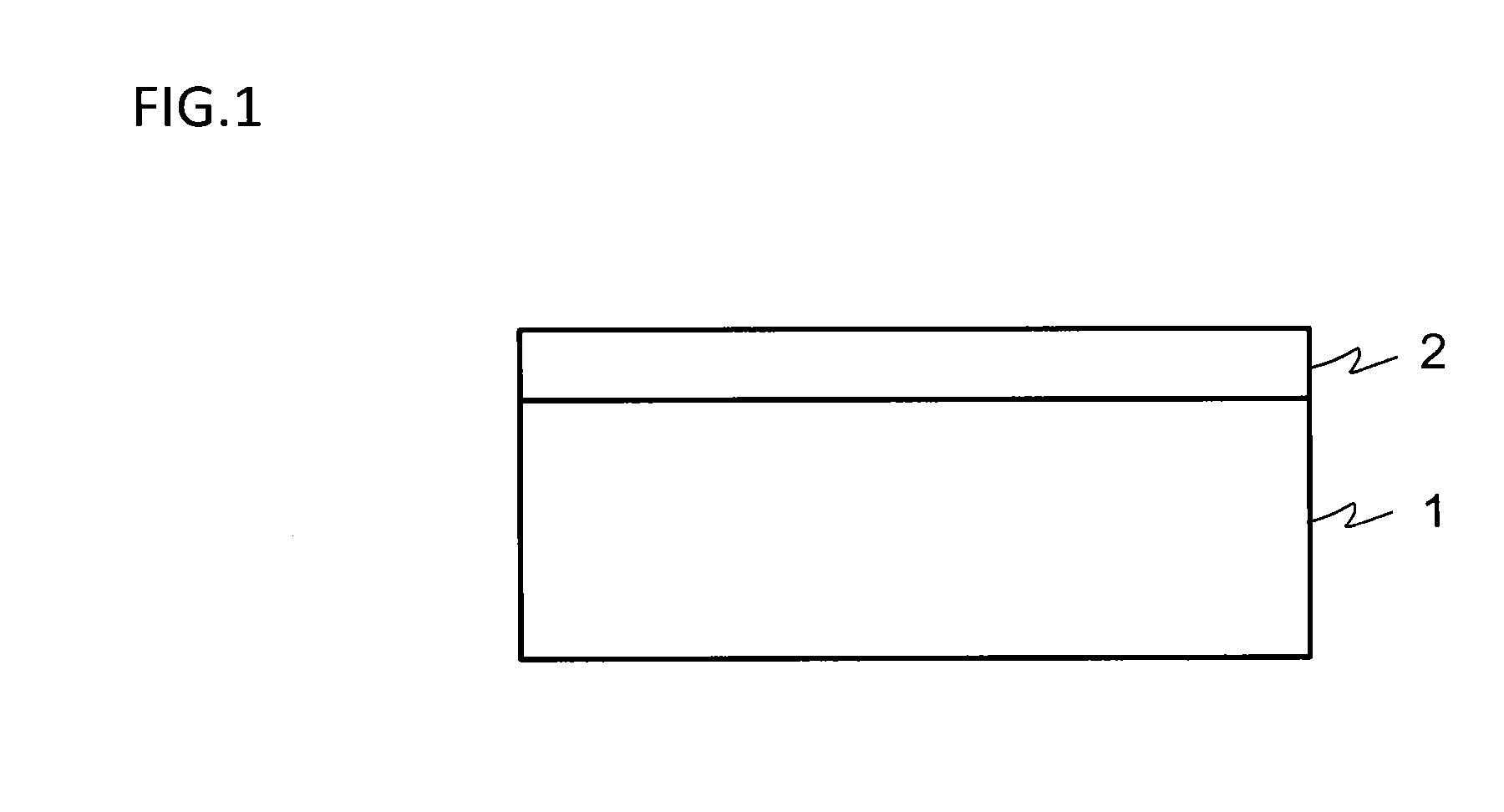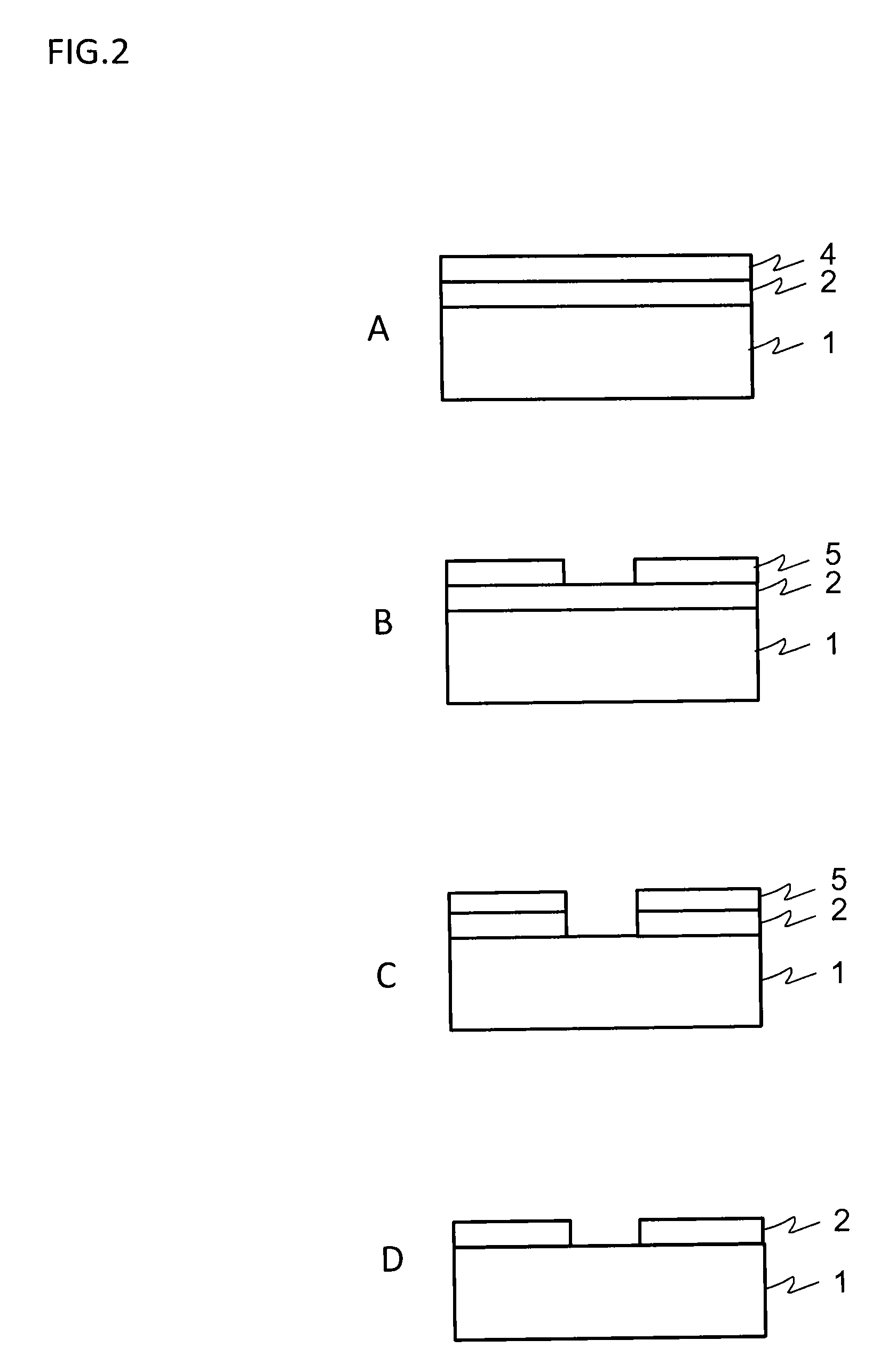Photomask blank, method for manufacturing photomask, and method for manufacturing phase shift mask
a technology of photomask and mask, which is applied in the field of photomask blank, can solve the problems of unwilling limitation of effect in view of shortening the total etching time, the inability to completely avoid the decrease in optical density, and the burden on the photoresist pattern or hard mask pattern at the time of transferring the pattern on the light-shielding film, etc., to achieve the effect of reducing the burden on the photoresist pattern or hard mask pattern at the tim
- Summary
- Abstract
- Description
- Claims
- Application Information
AI Technical Summary
Benefits of technology
Problems solved by technology
Method used
Image
Examples
example 1
[0152]A light-shielding film including a light-shielding layer and an anti-reflection layer was formed on a quartz substrate by using a direct-current sputtering device. As a light-shielding layer, a film (46 nm in film thickness) made of chromium, tin, and nitrogen was formed on the quartz substrate.
[0153]Using two different targets, a chromium target and a tin target, as targets, film-formation was carried out on the quartz substrate in rotation at 30 rpm. Sputtering gas used was Ar and nitrogen and adjusted so that the inside of a gas chamber could have a gas pressure of 0.05 Pa.
[0154]When the composition of this light-shielding layer was investigated by ESCA, it was Cr:Sn:N=6:1:2 (atomic ratio).
[0155]On the light-shielding layer, film-formation of an anti-reflection layer (23 nm in film thickness) made of chromium, tin, nitrogen, and oxygen was carried out by using a direct-current sputtering device.
[0156]Using two different targets, a chromium target and a tin target, as target...
embodiment 2
[0162]A light-shielding film including a light-shielding layer and an anti-reflection layer was formed on a quartz substrate by using a direct-current sputtering device. As a light-shielding layer, a film (46 nm in film thickness) made of chromium, tin, and nitrogen was formed on the quartz substrate.
[0163]Using two different targets, a chromium target and a tin target, as targets, film-formation was carried out on the quartz substrate in rotation at 30 rpm. Sputtering gas used was Ar and nitrogen and adjusted so that the inside of a gas chamber could have a gas pressure of 0.05 Pa.
[0164]When the composition of this light-shielding layer was investigated by ESCA, it was Cr:Sn:N=6:1:2 (atomic ratio).
[0165]On the light-shielding layer, film-formation of an anti-reflection layer (23 nm in film thickness) made of chromium, tin, and nitrogen was carried out by using a direct-current sputtering device.
[0166]Using two different targets, a chromium target and a tin target, as targets, film-...
example 3
[0176]A light-shielding film including a light-shielding layer and an anti-reflection layer was formed on a quartz substrate by using a direct-current sputtering device. As a light-shielding layer, a film (46 nm in film thickness) made of chromium, tin, and nitrogen was formed on the quartz substrate.
[0177]Using two different targets, a chromium target and a tin target, as targets, film-formation was carried out on the quartz substrate in rotation at 30 rpm. Sputtering gas used was Ar and nitrogen and adjusted so that the inside of a gas chamber could have a gas pressure of 0.05 Pa.
[0178]When the composition of this light-shielding film was investigated by ESCA, it was Cr:Sn:N=6:1:2 (atomic ratio).
[0179]On the light-shielding layer, film-formation of an anti-reflection layer (23 nm in film thickness) made of chromium, tin, nitrogen, and oxygen was carried out by using a direct-current sputtering device.
[0180]Using two different targets, a chromium target and a tin target, as targets...
PUM
| Property | Measurement | Unit |
|---|---|---|
| optical density | aaaaa | aaaaa |
| optical density | aaaaa | aaaaa |
| optical density | aaaaa | aaaaa |
Abstract
Description
Claims
Application Information
 Login to View More
Login to View More - R&D
- Intellectual Property
- Life Sciences
- Materials
- Tech Scout
- Unparalleled Data Quality
- Higher Quality Content
- 60% Fewer Hallucinations
Browse by: Latest US Patents, China's latest patents, Technical Efficacy Thesaurus, Application Domain, Technology Topic, Popular Technical Reports.
© 2025 PatSnap. All rights reserved.Legal|Privacy policy|Modern Slavery Act Transparency Statement|Sitemap|About US| Contact US: help@patsnap.com



